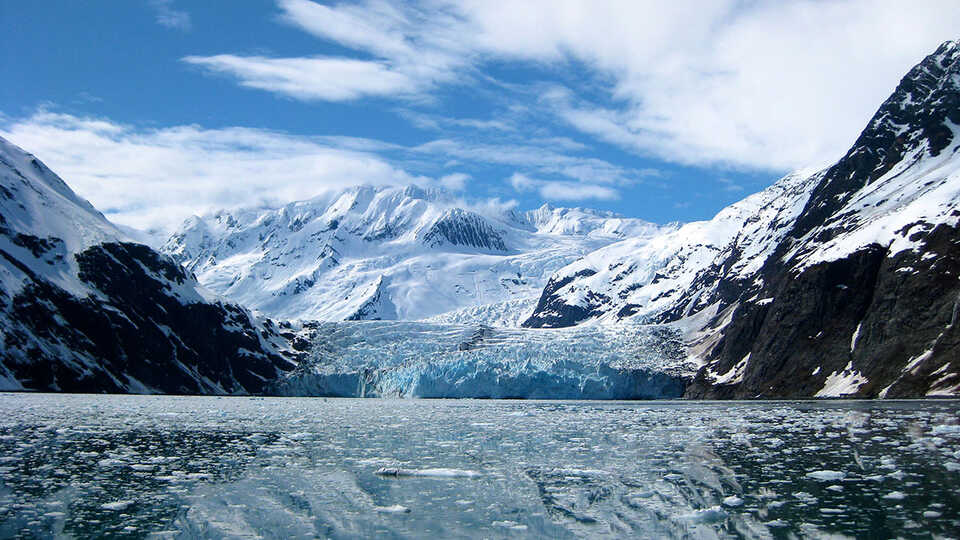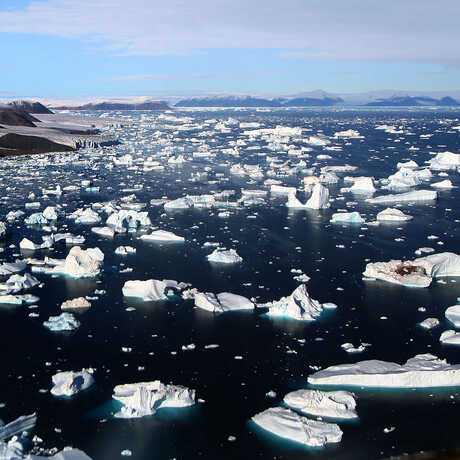One consequence of climate change is the melting of ice caps, glaciers, and sea ice, including polar ice in Greenland and Antarctica. Substantial melt of these massive glaciers will cause a rise in sea level along coastlines throughout the globe (Climate Institute, n.d.). This activity explores how melting ice impacts sea level.
Water is an unusual liquid because it expands when it freezes. In general, liquids do not expand upon freezing, but rather contract and become denser as temperature drops. Like other liquids, as water begins to cool, it becomes more and more dense. But, because of the physical structure of the water molecule, it continues to become denser until just before freezing, when it expands. This expansion occurs at the point at which freezing begins (around 4°C). At this temperature water molecules arrange themselves into a crystal lattice structure that is significantly less dense than the liquid form. Because of this decrease in density at the point of freezing, ice always floats on water (US Geological Survey, 2014).
When objects are totally submerged in water, they displace an amount of water equal to their volume. However, because ice floats on water and is not completely submerged, ice does not displace an amount of water equal to its volume. Instead, it displaces less than its total volume of water. The water that floating ice displaces is equal to the volume that the ice would take up if it melted and became water again. In other words, floating ice displaces water equal to the mass of the ice. When ice melts, the mass of the ice is conserved, but the crystal lattice structure of ice disappears and the volume decreases and becomes equal to the volume of water it displaced in its ice form.
Therefore, when floating ice melts, the melted water is equal only to the volume of the ice that was submerged. This means that when floating ice melts, it contributes no additional volume to the body of water. We see this phenomenon when we let ice melt in a glass of water. The water does not overflow because the ice has already displaced water equal to the volume it will take up upon melting.
Ice already in the oceans does not contribute to sea level rise, but ice covering land will contribute to sea level rise upon melting. For a video on this topic featuring the same activity in this lesson plan, click here.
The effects of sea level rise are global. According to maps created by the Bay Conservation and Development Commission for the San Francisco Chronicle (Kay, 2007), a 1 meter rise in sea level would submerge “parts of Corte Madera, San Rafael, Hayward, Newark and much of the Silicon Valley shoreline.” In San Francisco, “Mission Bay housing and office developments, Caltrain tracks, Candlestick Point redevelopment, Heron's Head Park….parts of Treasure Island, and the San Francisco and Oakland airports” would all be under water.




